-
CJ750 Gearbox gets a new 3rd and 4th gear - Install 3rd and 4th gear
The 3rd gear gets pressed on first. Note the angular position of the gear as it locks into the later 4th gear.
I built this press just for this. I could have bought myself a 20t press, but it takes two much space, and I rarely need it. It was also a lot of fun building it!
The two round holders at the top of the press are designed to accommodate a round bar for increased leverage.

With an oversize of 3/100mm there is still a lot of force required for this. The gears are secured with Loctite 638.
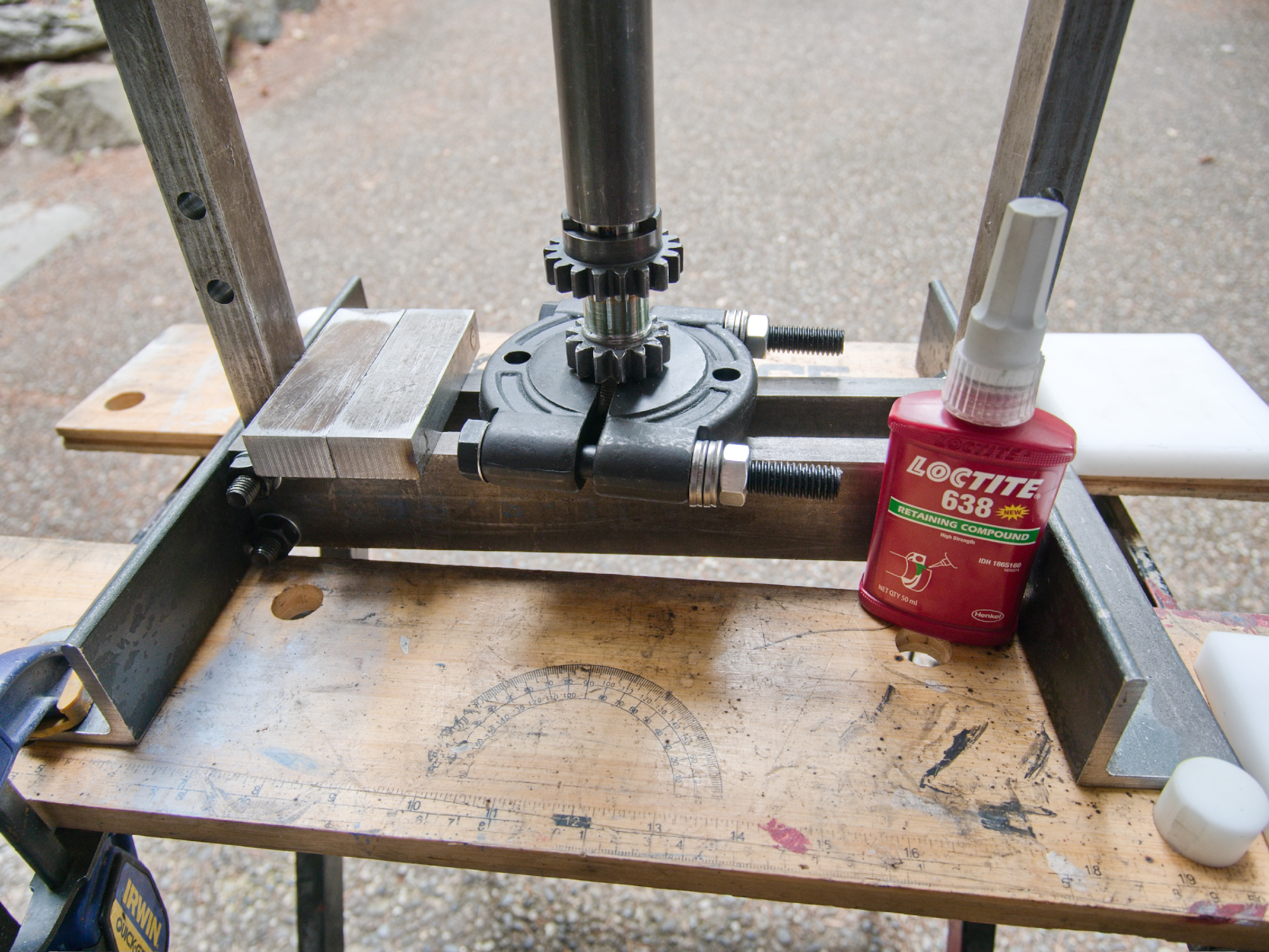
Note the angular position of the 3rd gear to the position of the key.
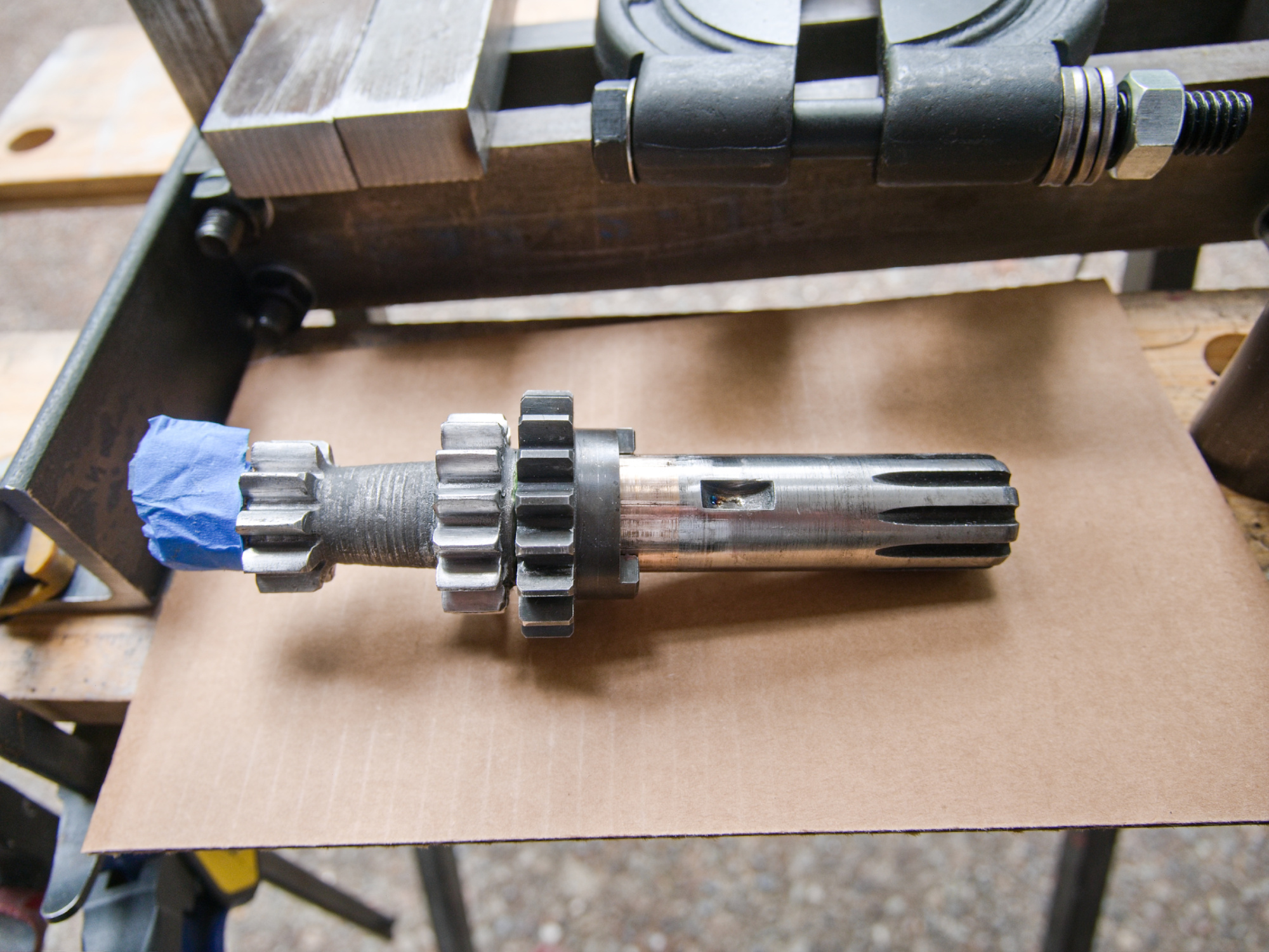
Once the 3rd gear is aligned (described in Align 3rd and 4th gear), the 4th gear along with the key is pressed on.
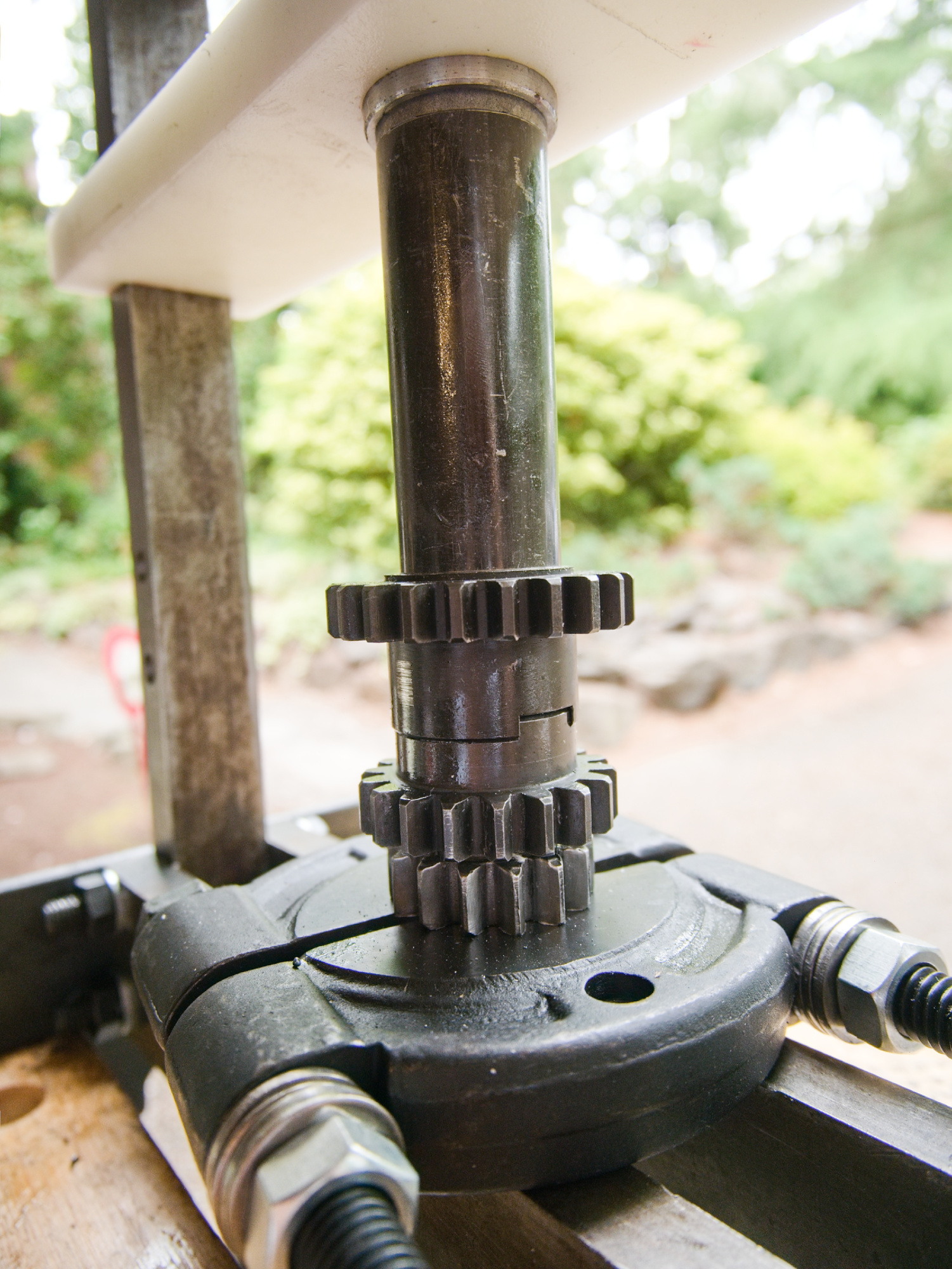
Old and new input shaft side by side.
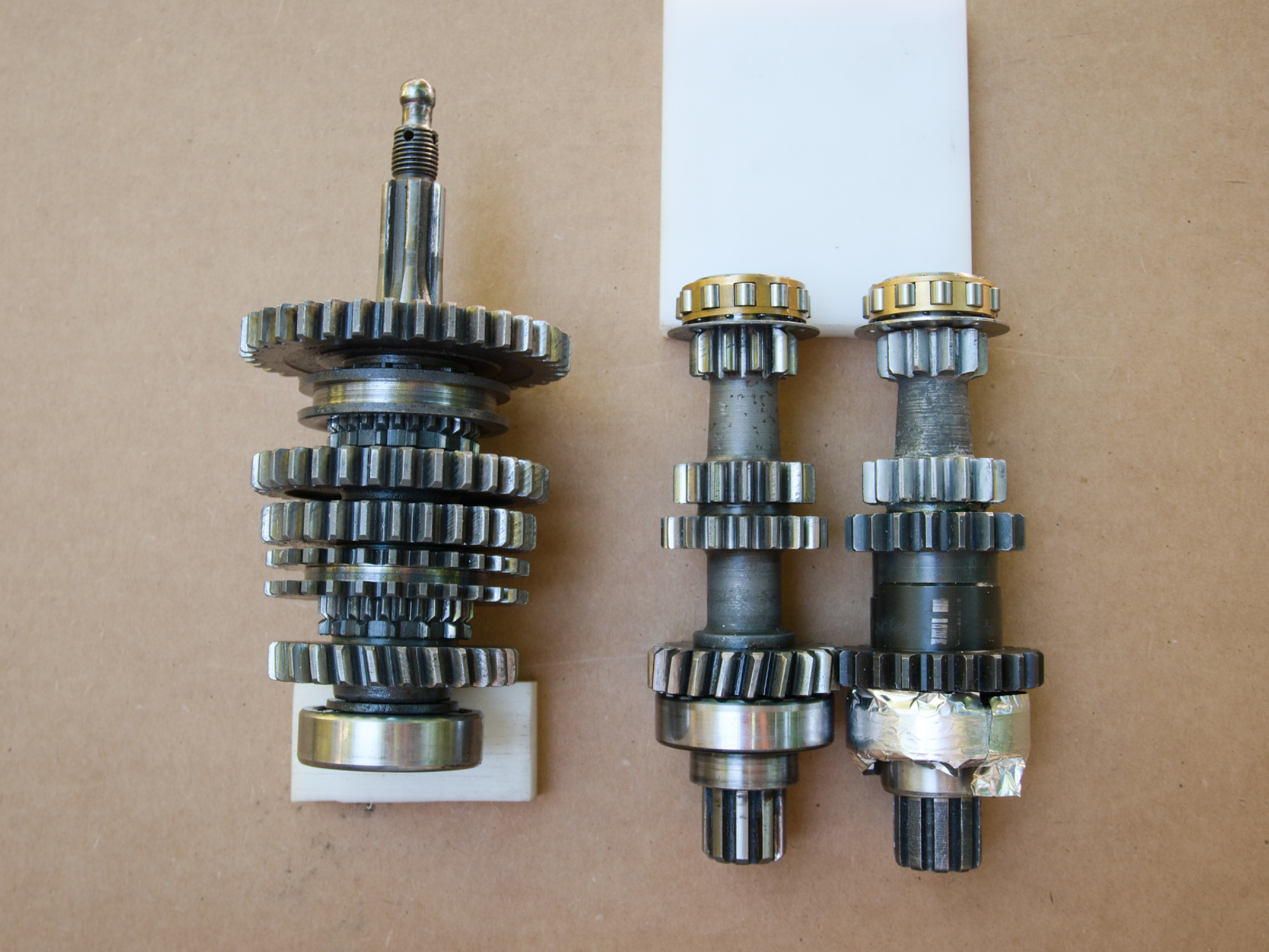
-
CJ750 Gearbox gets a new 3rd and 4th gear - The Plan
My CJ750 motorcycle has a BMW R100 engine, and driving with 100km/h (60mph) on the freeway requires almost 5000rpm. This has to be changed.
The gearbox for the CJ750 (and the M72) has the following ratios:
gear# gear tooth ratio gear ratio 1st 36 / 10 3.6 2nd 32 / 14 2.29 3rd 29 / 17 1.71 4th 26 / 20 1.3 Reverse 4.2 With a tire circumference of 26 inch and a final drive ratio of 37/8, the rpms require to drive 100km/h (60mph) in 4th gear for all available gear ratios 26/20 (1.30), 25/21 (1.19), 24/22 (1.09) and 23/23 (1.00) are:
rpm for 100km/h 4th gear ratio 4830 1.3 4421 1.19 4050 1.09 3715 1.0 4050rpm is good for 100km/h with a sidecar, so the 24/22 for the 4th gear is selected.
The change from 1.3 to 1.09 is actually the same as using a high speed final drive with a 35/9 ratio instead (1.09 37 / 8 9 / 35 = 1.3). I'm using an EU quality final drive with a 37/8 ratio to avoid the russian and chinese junk, so thats why I need the adjustment in the gearbox.
To only change the 4th gear to 24/22, the ratio changes would be 1.57 - 1.34 - 1.421st: 36/10 (3.60) 1.57 2nd: 32/14 (2.29) 1.34 1.48 1.48 1.48 3rd: 29/17 (1.71) 28/18 (1.55) 28/18 (1.55) 28/18 (1.55) 1.32 1.30 1.42 1.55 4th: 26/20 (1.30) 25/21 (1.19) 24/22 (1.09) 23/23 (1.00) The change ratio decreases with increasing gear number for all gearboxes I checked.
For example, one BMW gearbox had 1.51 - 1.37 - 1.25:
1st: 3.90 - 1.51 - 2nd: 2.58 - 1.37 - 3rd: 1.88 - 1.25 - 4th: 1.5But 1.57 - 1.34 - 1.42 (with only the 4th gear changed) is not monoton decreasing.
The only possible replacement for the 3rd is a 28/18 from the DNEPR MT804. Fortunately, this gets a ratio change of 1.48, and the sequence is now monoton decreasing. And it almost matches the ratio if a high speed drive would be used (1.71 35 / 9 8 / 37 = 1.437).So the new 3rd gear is a 28/18.
But the CJ750 input gear shaft is designed have only the 4th gear changed. This requires that the 3rd gear needs to be removed and the input shaft modified so that the new 3rd/4th gear can be pressed on.
The inner diameter of all output shaft gears are 26mm with a 10.5mm tooth width and only need a new spacing. Leszek from oldtimergarage.eu has verified the measurements for this unique project, and now it’s all set to launch! 🚀
First, the gearbox needs to be disassembled.
Exploded CJ750 Gearbox, Type 52:
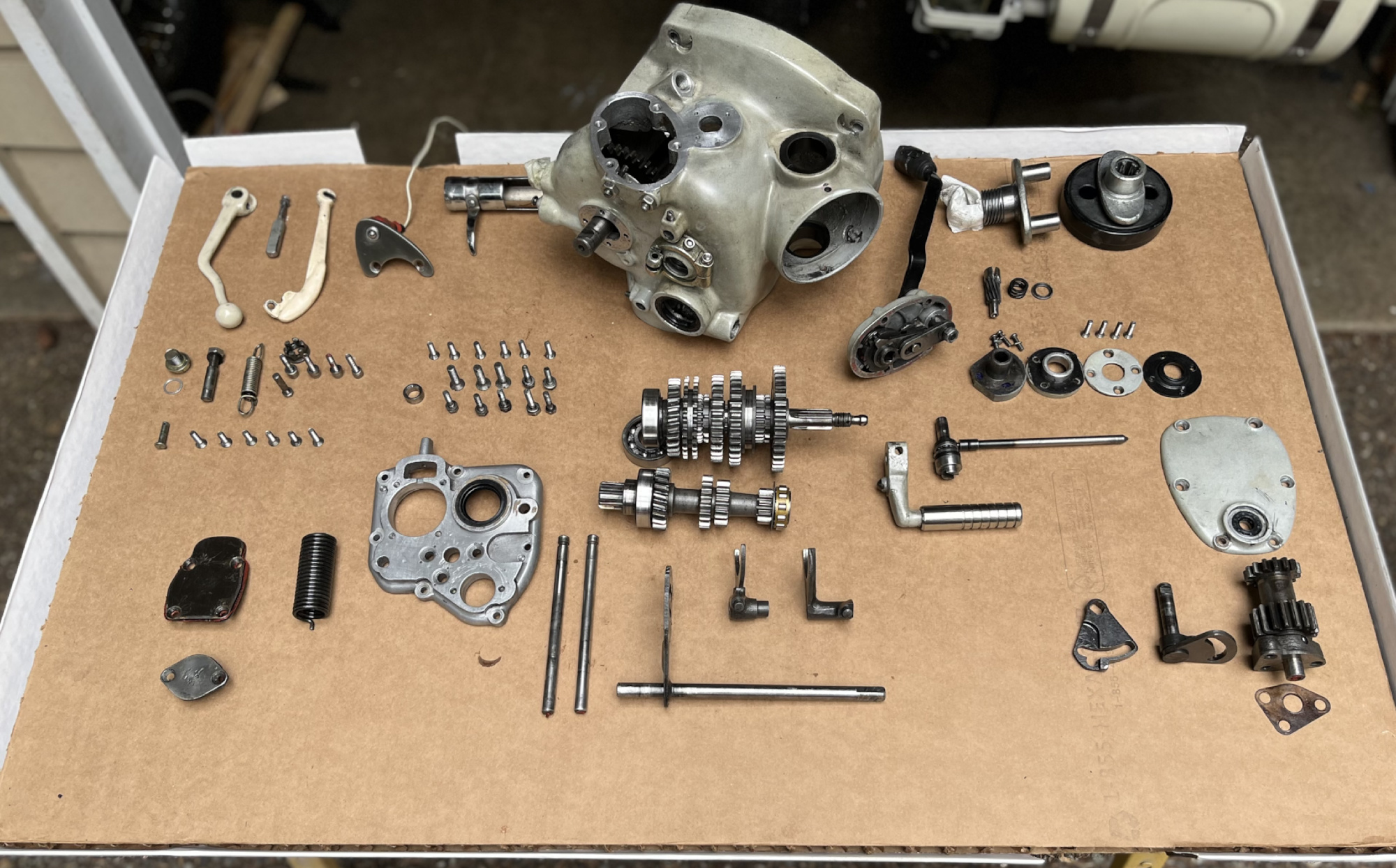
Gears on the upper output shaft are all free spinning and can be replaced easily, while the lower input shaft has only the 4th gear pressed on. The 1st, 2nd and 3rd are fixed and part of the input shaft structure.
Project plan
For the upper shaft, new spacers will be created to align the new (free spinning) gears, and for the lower input shaft, the 4th gear is pulled, the 3rd gear removed and the shaft machined for the new gear set to be pressed on.

-
CJ750 Gearbox gets a new 3rd and 4th gear - Modify the input shaft
To get started, the 4th gear needs to be pulled off the input shaft. This is done with a standard gear puller. But what was not that standard, was the force required to get this actually off.
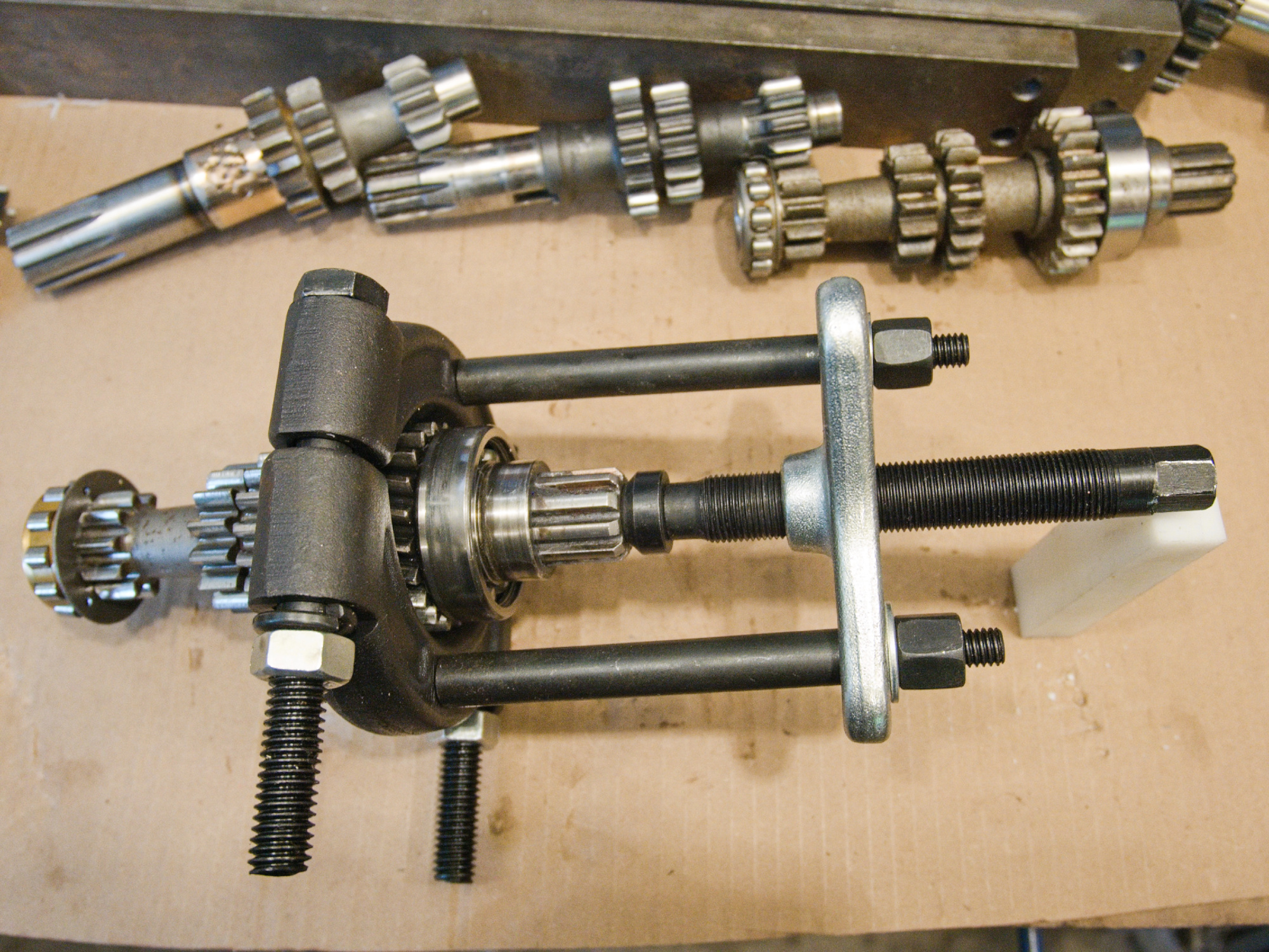
I ended up putting the puller’s screw in the vise, and used a long bar to rotate the gear around it for extra leverage. The deformation of the rather solid plate give a glimpse of the applied forces. Once this was finished, I was done for the week with any physical activities.
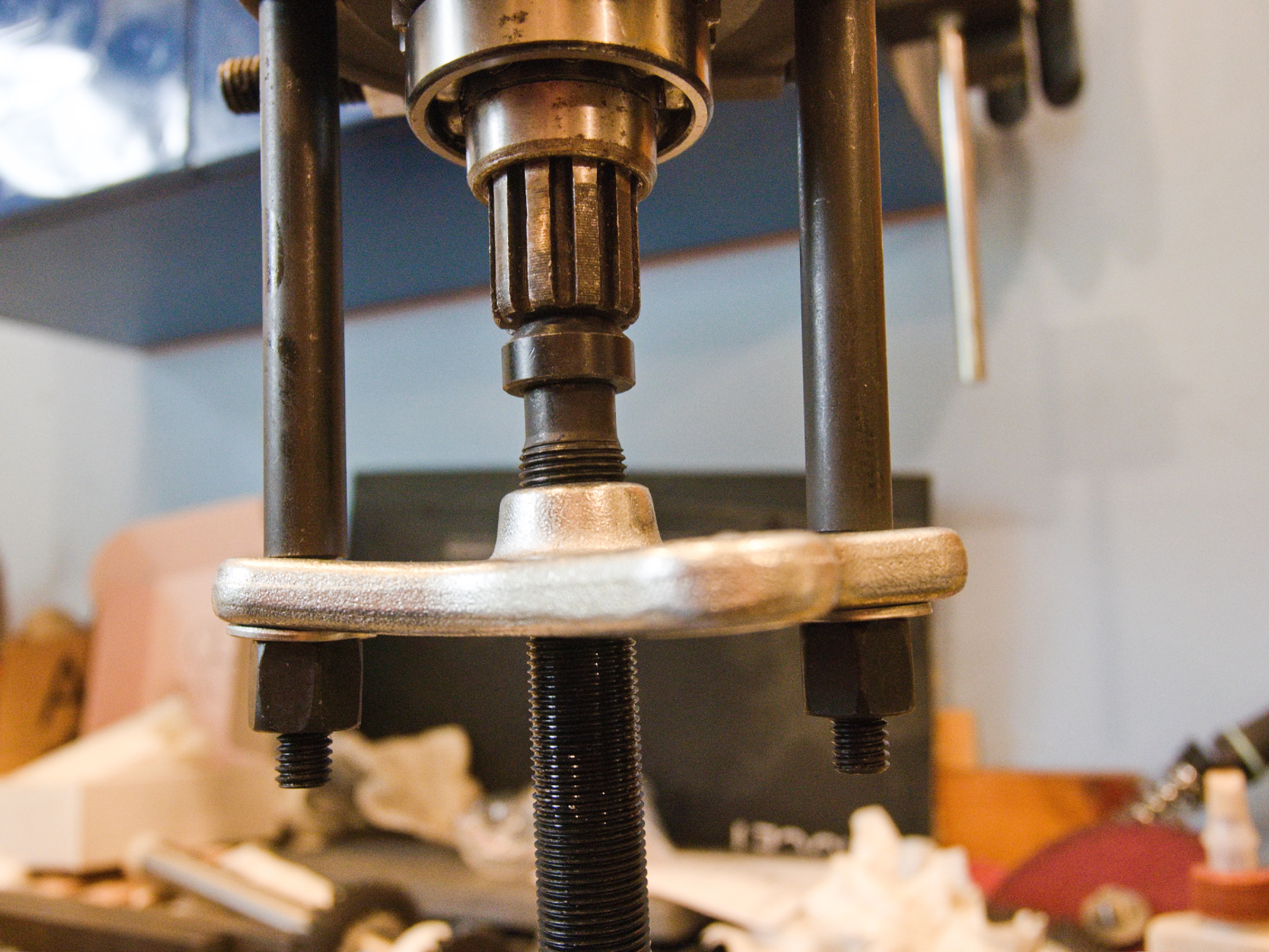
With the 4th gear off, the next step was to fill the gap between the 3rd and the 4th gear.

I used an older input shaft to try the brazing. Brazing involves applying just enough heat to melt the filler material without affecting the base material, allowing capillary action to bond the parts together.
I tried welding, but it put way too much heat in the part that it would change the metallurgical properties and the hardening of the part.
Using a TIG welder, brazing with Silicon-Bronze rods was actually quite easy.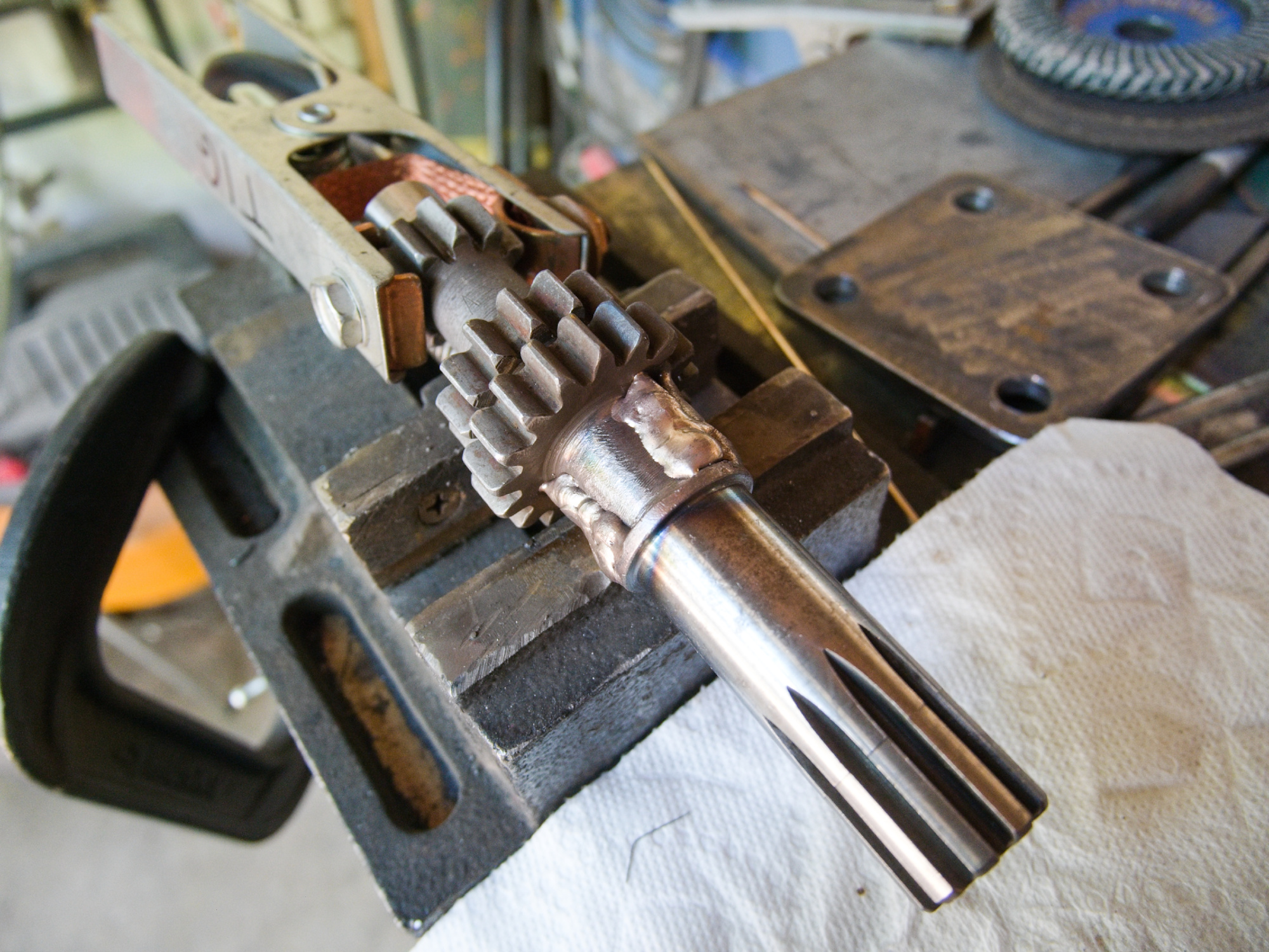
The input shaft used for the project.
I used water to keep the material temperature low.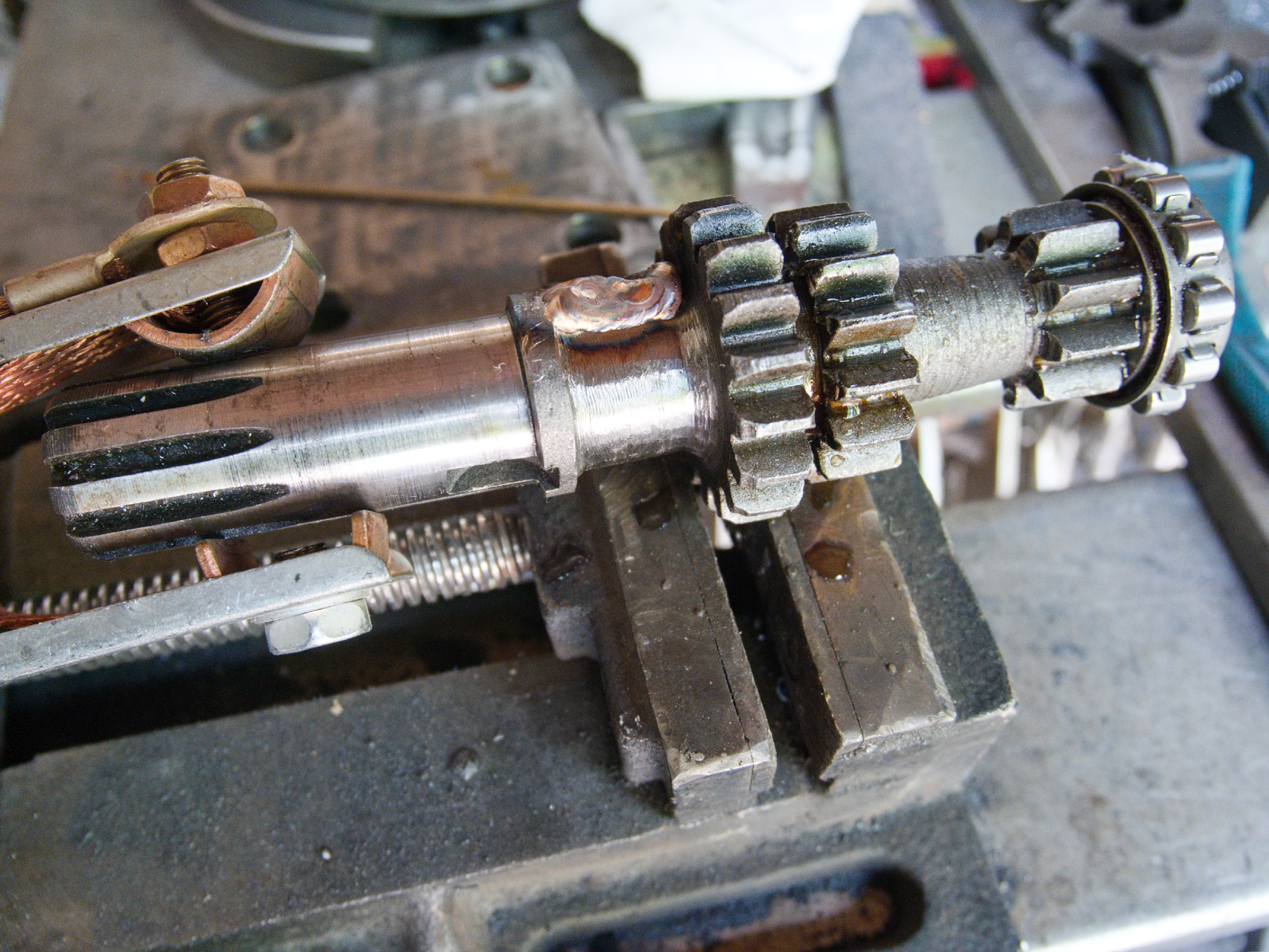
The gap is all filled with Silicon-Bronze.

The 3rd gear was removed with a grinder.

The input shaft had a severe runout at the bearing. To fix this, I machined the front part and created a bronze bushing. The bushing for the bearing is pressed on in a machine vise and secured using Loctite 638 (green colored glue).

The shaft is machined to its final dimensions.


The old and the new input shaft.
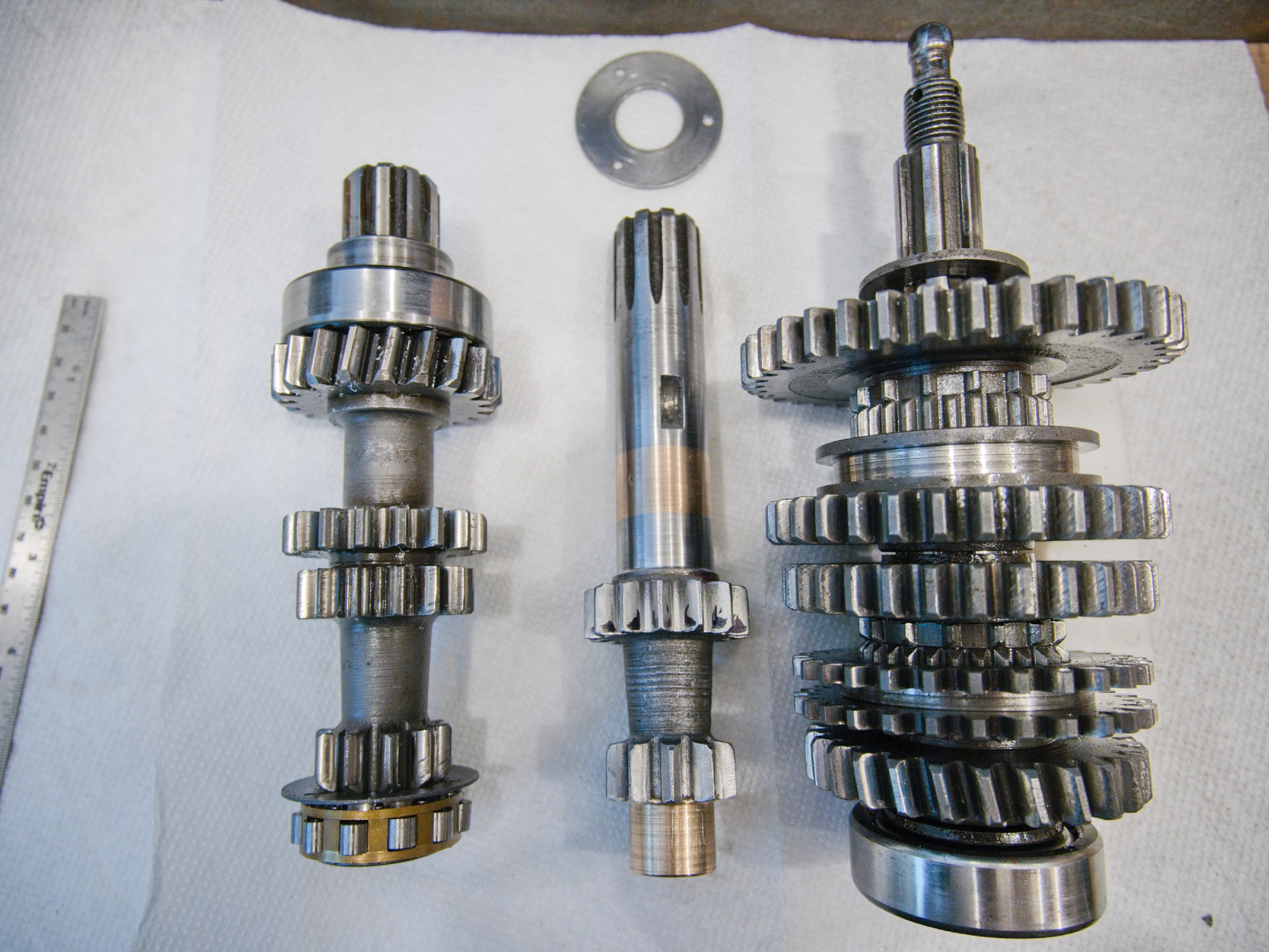
The new 4th gear is secured with a key, while the 3rd gear locks into the 4th gear.
A standardized key is not wide enough for the slot and is padded with two small metal parts.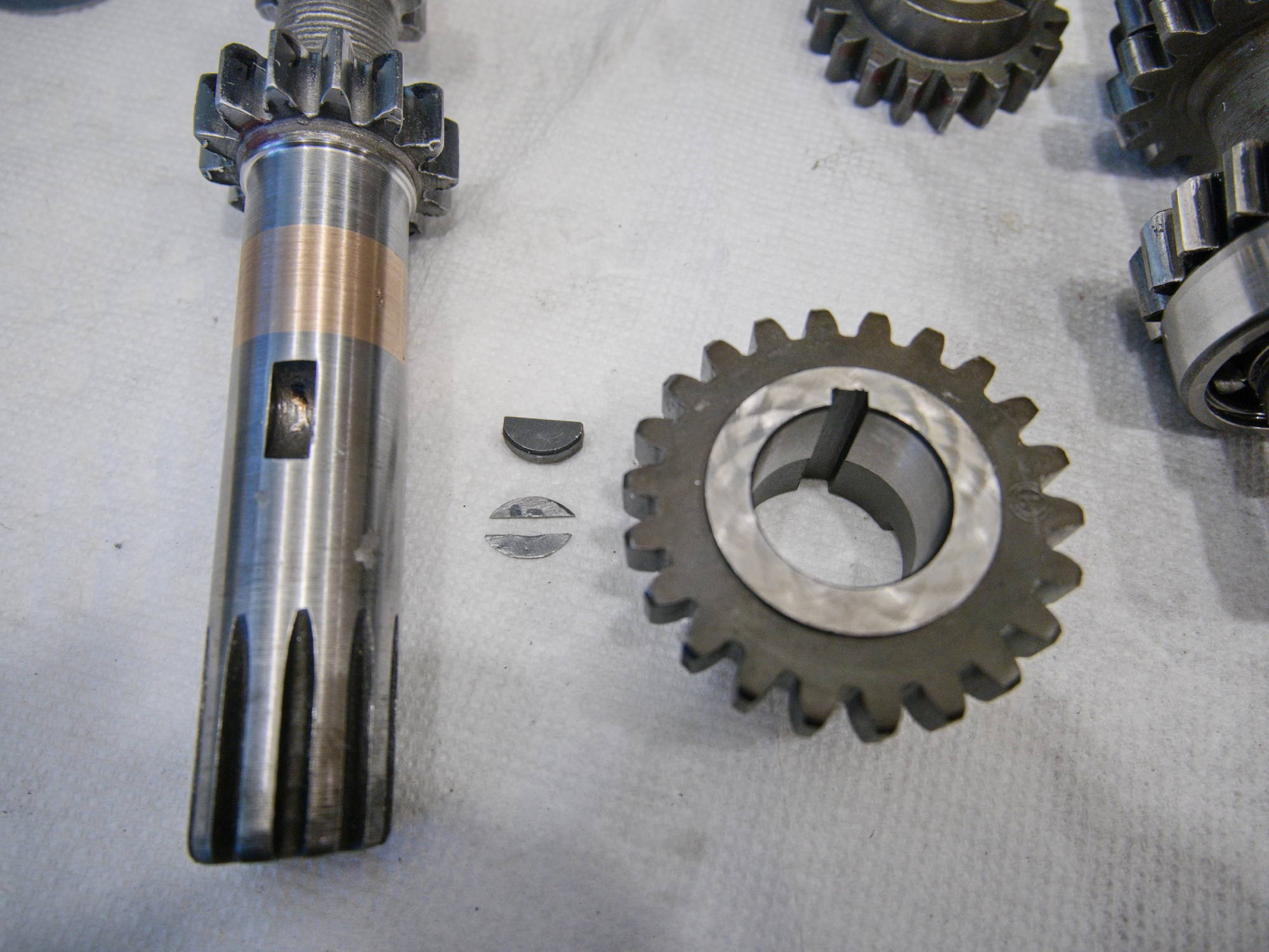
-
Opel’s 125th Anniversary: A Journey Through Time
Opel is celebrating its 125th anniversary, and I recently watched a documentary about its history: 125 Jahre Opel - Kultautos und Krisenjahre.
The documentary highlighted many significant milestones and innovations from Opel over the years, making it a great watch.
In one of the historic clips, a Citroën DS was seen driving past the entrance of the Opel facility. Being a big fan of the DS, I noticed it immediately. It was interesting to see such an iconic car from another brand. I was anticipating an Opel in this context!
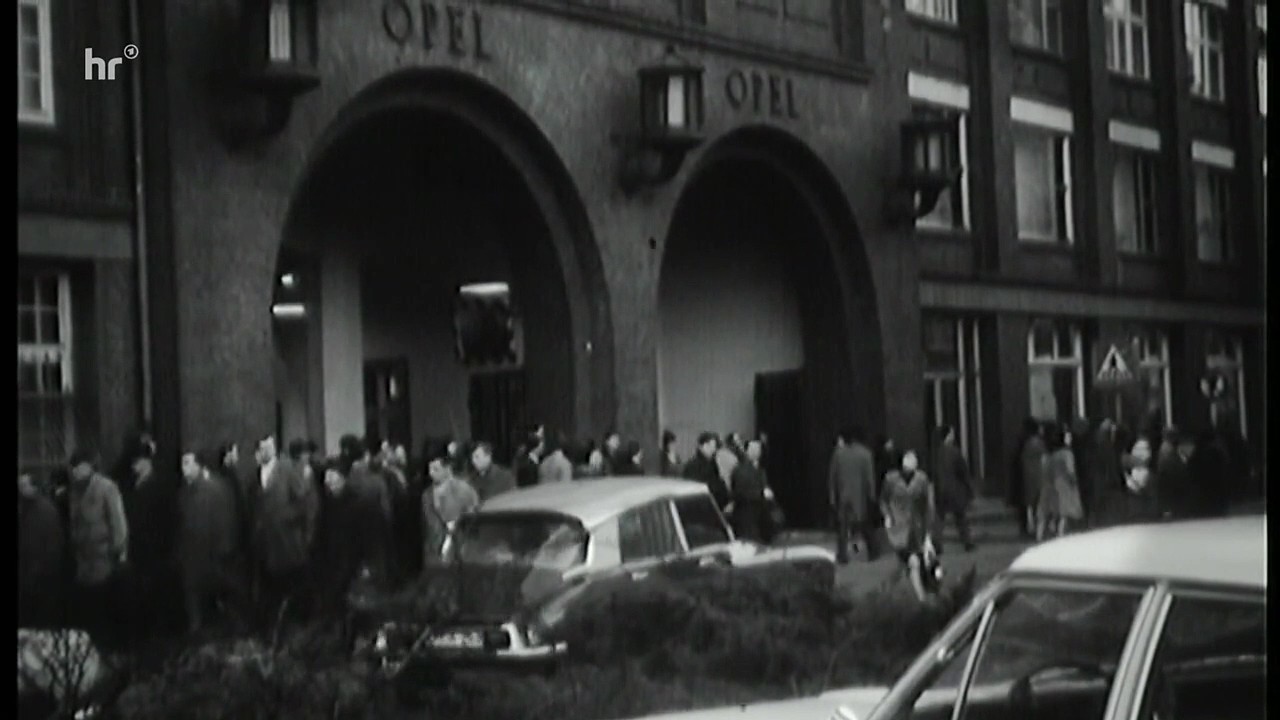
Historic clip:
This is where the clip with the Citroën DS was filmed: Marktstraße 35, 65428 Rüsselsheim am Main, Deutschland, Google Map

PS: Vier Rädder un eh Brett - Opel Kadett
-
Arduino Darkroom Timer
Precise timing is critical in analog photography, especially during the development process in the darkroom. This project presents a versatile darkroom timer built around the Arduino Uno R4 and Gamepad Input Shield, designed to support key photographic development tasks with tactile control and visual feedback. It features an 8x8 LED matrix for ambient illumination and implements five distinct modes: LED brightness adjustment, manual and timed enlarger control, chemical bath sequencing, and a general-purpose timer. Navigation is intuitive via joystick or button input, making it a practical and user-friendly tool for analog photography workflows.
This project uses the Gamepad Input Shield and Arduino Uno R4. Wiring details are available in the source code. The joystick or up/down buttons are used to switch between tasks, while left/right buttons adjust the state or settings.
The first 8x8 LED block is used to illuminate the darkroom.The timer implements five tasks:
- LEDBrightnessTask: Adjusts LED brightness from 0 to 15.
- EnlargerOnOffTask: Manual control of the enlarger.
- EnlargerTimerTask: Timed control of the enlarger.
- DevelopStopFixTask: Three timers for develop, stop bath, and fix stages.
- GeneralTimerTask: A general-purpose timer starting from 0 seconds.
LEDBrightnessTask
Sets the brightness of the 8x8 darkroom illumination LEDs from min 0 to max 15.
EnlargerOnOffTask
Manual enlarger switch switched on.
EnlargerTimerTask
Timed enlarger switch.
DevelopStopFixTask
3 timers for develop, stop bath and fix.
GeneralTimerTask
General timer starting from 0s.
Arduino Darkroom Timer Github Project
This darkroom timer project combines modern microcontroller technology with the tactile simplicity of gamepad input to support essential analog photography tasks. Whether you're timing enlarger exposures or chemical baths, this tool offers consistent performance and flexibility for both amateur and professional darkroom enthusiasts. With five dedicated modes and intuitive controls, it provides a reliable and customizable solution for anyone working in a traditional darkroom. The open-source design invites further experimentation and adaptation—whether you're refining your workflow or building your own version.